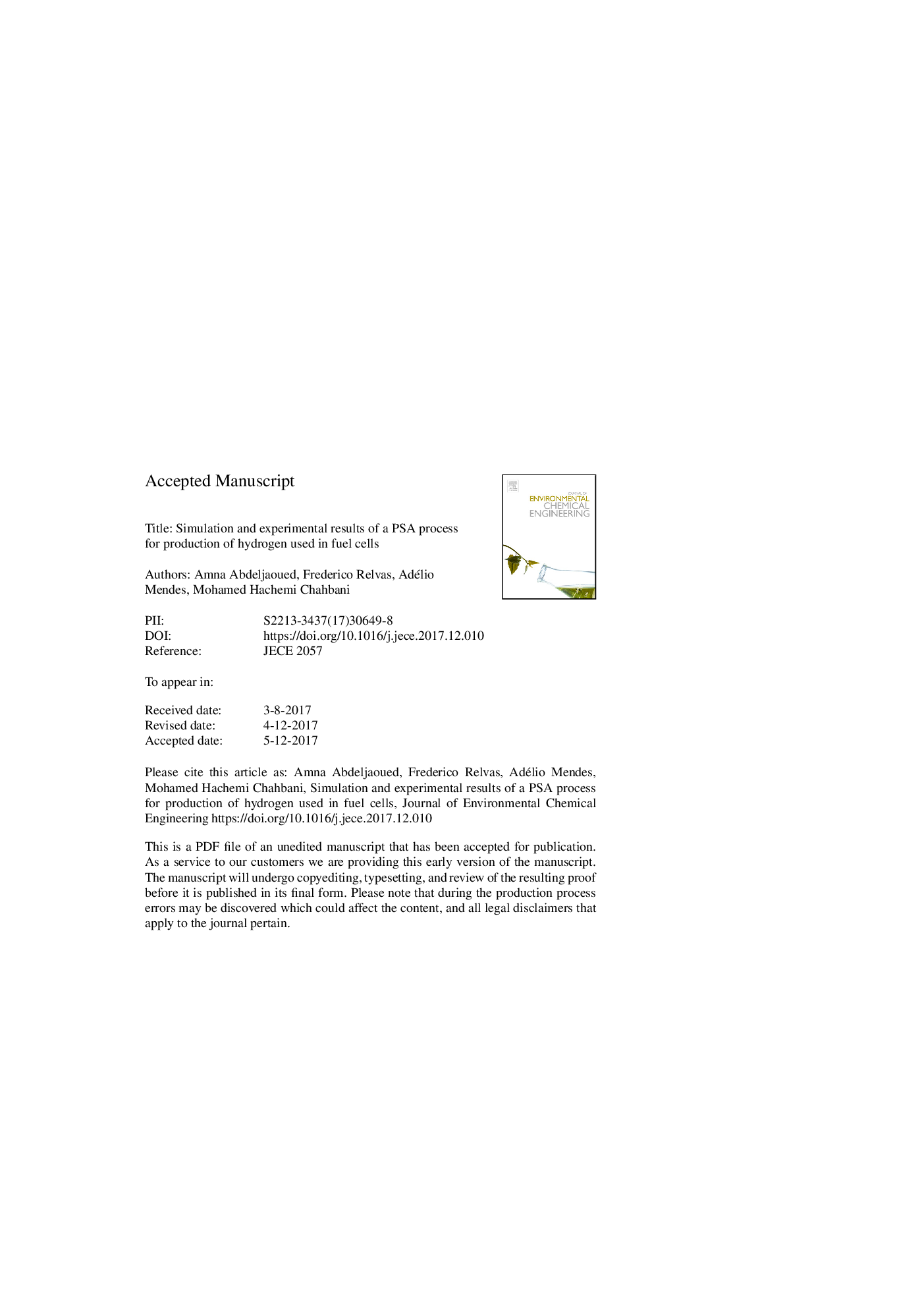| Article ID | Journal | Published Year | Pages | File Type |
|---|---|---|---|---|
| 6664090 | Journal of Environmental Chemical Engineering | 2018 | 54 Pages |
Abstract
In recent years, considerable effort has been made to develop technologies for harvesting energy from renewable sources. Hydrogen can be used in fuel cells to produce electricity very efficiently and cleanly. Among the various processes proposed, steam reforming of ethanol for hydrogen production is very attractive. In the steam reforming reaction, in addition to H2 and CO2, significant amounts of CO and CH4 are also formed due to side reactions. Prior to design a Pressure Swing Adsorption (PSA) unit aiming at producing H2 with very small amounts of CO, it is essential to experimentally determine the adsorption equilibrium isotherms and mass transfer kinetics data of the multicomponent system (H2, CH4, CO2, CO). A theoretical twelve- step four-column PSA model has been developed for studying impurity removal from steam reforming of ethanol for producing ultra-pure hydrogen. The model which is implemented in Aspen Adsorption was validated by experimental data on a commercial activated carbon. Simulation results relative to breakthrough curves, bed temperature distribution and PSA performances show good agreement with experimental ones.
Related Topics
Physical Sciences and Engineering
Chemical Engineering
Chemical Engineering (General)
Authors
Amna Abdeljaoued, Frederico Relvas, Adélio Mendes, Mohamed Hachemi Chahbani,
